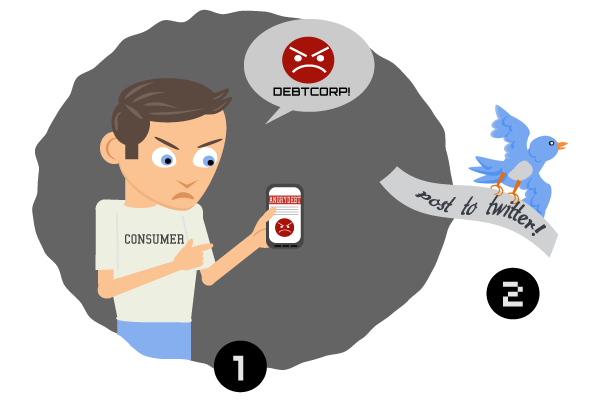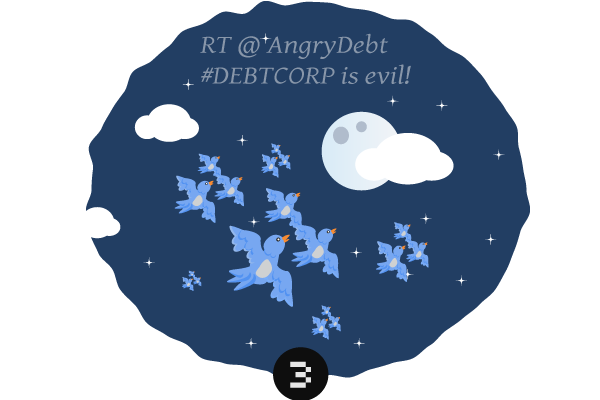For any industry that routinely encounters negative press and online consumer backlash, search engine optimization (SEO) is an important concept to understand and use properly. Many debt collection agencies can probably attest to the reputational risks posed by derogatory statements posted online about their businesses by performing a Google search of their company name and scanning the number of inflammatory results. So what exactly is SEO and what specifically is its value as a brand management tool for collection agencies, debt buyers, collection law firms, and other ARM service providers?
Simply put, SEO is a collection of best practices, strategy and tactics for increasing the prominence of your company’s name, website, and overall brand in online search results. When deployed as a business tool, it can be a powerful compliment to other traditional marketing efforts. Research shows that the first page of Google search results receive an overwhelming 90% of all click-throughs[i], demonstrating that it is critical for businesses to rank in the top ten results for their respective terms. For ARM firms, proactive SEO strategies provide the additional benefit of helping to control the online message about your company.
There is a science to proper SEO. However, rather than dive into the technical complexities of Google’s search algorithm, let’s instead examine how ARM firms can use SEO to control their marketing messages, make their businesses more visible to potential clients, and leverage social media sites as powerful inbound-link allies.
Controlling your message.
You know the drill—a debtor receives a call from one of your employees and immediately posts a negative comment on a consumer board about your company. After a few months, you’re faced with a massive stream of negative search results when you Google your company’s name. While it’s easy to brush off consumer gripes about your company as just the cost of doing business as a debt collector, imagine how these search results look to a potential client who is trying to verify your firm’s credibility via the web. Instead of positive press releases or articles, demos, and valuable information about your products and services, they’ll see negative consumer posts from forums and social media sites. Unless you take steps to actively control the message about your company, you may have already lost the battle—and potential revenue—on the client front.
Social media is not just a trend.
If you take away only one lesson from this blog, let it be this: social media is no passing fad. Sure, the whole process can seem absurd at times—after all, do we really need to know the sandwich habits of our favorite celebrity, or that our friends are sitting in traffic during their daily commute? Many consumer and B2B businesses have found ways to make social media a useful sales tool through customer engagement and special promotions. Unfortunately for the ARM industry, social media platforms also enable consumers to band together to broadcast their criticisms of a given company or the entire collection industry.
So how does social media figure into SEO and impact your company’s brand image? It really boils down to the domain authority (explained below) of sites like Twitter and the sheer number of inbound links to those domains. Consider the following sequence of events:
1. Joe the Consumer posts a negative blog about DebtCorp.
2. He posts a link to the blog on Twitter, where it’s seen by others.

3. Other people see the link and reTweet it 200+ times, connecting Joe’s negative blog post with the keyword #debtcorp.

4. Googlebot hears about the post from Twitter. Since 200+ people reposted the link, they have effectively endorsed Joe’s blog as a credible piece of information about DebtCorp. Googlebot raises Joe’s post to the front page of search results for DebtCorp.

5. J. Decision Maker searches Google for DebtCorp and finds Joe’s post because it’s been given high rank by Googlebot. J. Decision Maker decides not to hire DebtCorp due to the negative results like Joe’s post.

As this story illustrates, social media doesn’t just give a consumer an isolated platform to discuss your firm; it can directly impact the impression you create in the minds of executive decision makers who seek out and vet your company on the web – bottom line: the failure to control the message and manage your brand will cost you clients (not to mention the risk of derailing consumer relationships and timely payments to you).
The good news is that if you take the time to craft a social media strategy for your company, you will reap the dual benefits of leveraging the domain power of sites like Twitter and Facebook while driving down negative results with your positive, controlled messaging.
SEO isn’t a magic bullet.
The end goal of SEO, like any other marketing tactic, is to drive more leads and ultimately secure more business. However, it can’t magically fix your online marketing process for you. After all, what’s the use of bringing in potential leads if your website lacks focus or the ability to accurately capture visitor information? Tools like Google Analytics, keyword trackers and on-page content scoring as well as proper marketing conversion techniques will help your company achieve a bankable competitive advantage over other ARM competitors vying for the same business.
How many of you have engaged with an SEO consultant or performed SEO in-house? I’d love to hear examples of how SEO has affected your online marketing efforts and results. Questions from those who have never implemented SEO techniques are also welcome.
[i] Google SERP ranking stats
http://www.seotips247.com/google-serp-stats
About the author
Naveen is the senior marketing manager for Kaulkin Media and has experience in both B2B and B2C marketing arenas. He writes and illustrates articles for insideARM about marketing in the ARM industry. If you’d like to discuss your company’s marketing, you may reach Naveen at 240-499-3826 or visit the Kaulkin Media Creative Services page.




![the word regulation in a stylized dictionary [Image by creator from ]](/media/images/Credit_Report_Disputes.max-80x80.png)
![Cover image for New Agent Onboarding Manuals resource [Image by creator from insideARM]](/media/images/New_Agent_Onboarding_Manuals.max-80x80_3iYA1XV.png)


![[Image by creator from ]](/media/images/New_site_WPWebinar_covers_800_x_800_px.max-80x80.png)
![[Image by creator from ]](/media/images/Finvi_Tech_Trends_Whitepaper.max-80x80.png)
![[Image by creator from ]](/media/images/Collections_Staffing_Full_Cover_Thumbnail.max-80x80.jpg)
![Report cover reads One Conversation Multiple Channels AI-powered Multichannel Outreach from Skit.ai [Image by creator from ]](/media/images/Skit.ai_Landing_Page__Whitepaper_.max-80x80.png)
![Report cover reads Bad Debt Rising New ebook Finvi [Image by creator from ]](/media/images/Finvi_Bad_Debt_Rising_WP.max-80x80.png)
![Report cover reads Seizing the Opportunity in Uncertain Times: The Third-Party Collections Industry in 2023 by TransUnion, prepared by datos insights [Image by creator from ]](/media/images/TU_Survey_Report_12-23_Cover.max-80x80.png)
![Webinar graphic reads RA Compliance Corner - Managing the Mental Strain of Compliance 12-4-24 2pm ET [Image by creator from ]](/media/images/12.4.24_RA_Webinar_Landing_Page.max-80x80.png)